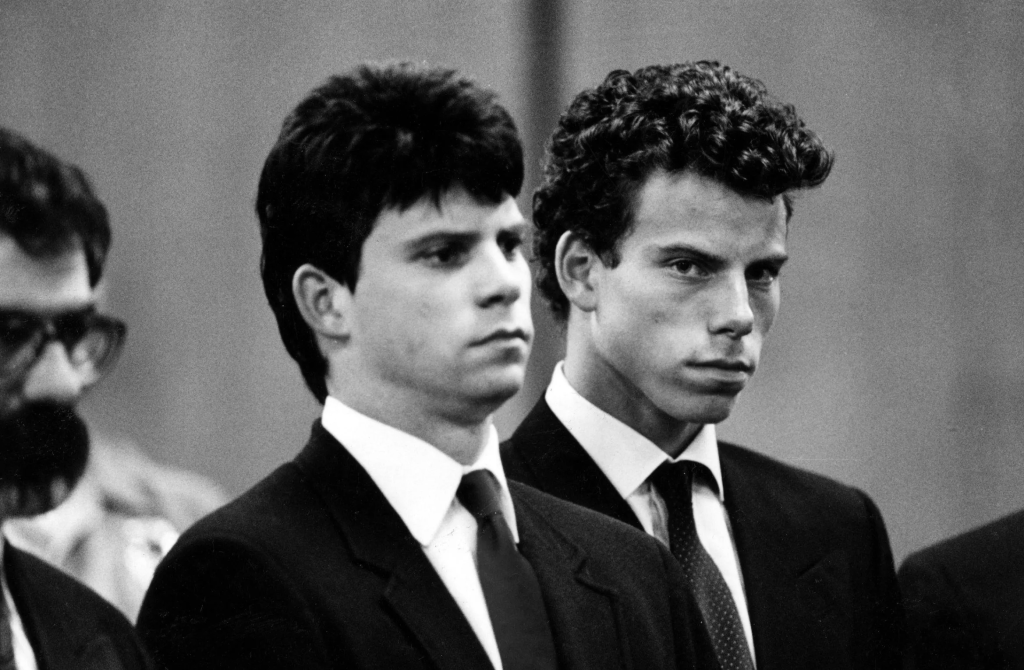In the annals of criminal history, few names evoke as much fascination and dread as that of Ted Bundy. Notorious for his charm, intelligence, and utter depravity, Bundy’s name has become synonymous with the darkest depths of human evil. From the 1970s until his capture in 1978, Bundy terrorised multiple states across America, leaving a trail of fear and destruction in his wake.
But who was Ted Bundy, and what drove him to commit such heinous acts? To understand Bundy is to delve into the complex labyrinth of human psychology, where the boundaries between good and evil blur and the depths of human depravity are laid bare.
In this blog post, we embark on a journey into the mind of a serial killer, seeking to unravel the enigma that is Ted Bundy. We’ll explore his early life, his modus operandi, and the psychological theories that attempt to shed light on his actions. But more than a mere study of a single individual, our exploration of Bundy’s life and crimes offers profound insights into the nature of evil itself and the eternal quest to understand the darkest corners of the human psyche.
Join us as we venture into the shadows, where the legacy of Ted Bundy looms large and the echoes of his crimes continue to reverberate through the corridors of history.
- Background And Early Life
- Modus Operandi (Method)
- How Was He Caught
- Trial
- Psychological Profile
- Media Portrayal And Legacy
- Impact
Background And Early Life
The story of Ted Bundy begins not with the chilling headlines that would later define him but in the ordinary suburban landscape of 1940s America. Born Theodore Robert Bundy on November 24, 1946, in Burlington, Vermont, he seemed, by all accounts, to be an unremarkable child in a loving family.
Bundy’s childhood, however, was not without its shadows. Raised by his maternal grandparents, Samuel and Eleanor Cowell, Ted was led to believe that his mother, Louise Cowell, was his older sister. The truth of his parentage remained concealed from him until his teenage years, contributing to a sense of confusion and identity crisis that would haunt him throughout his life.
Despite the upheaval in his family life, Bundy displayed early signs of intelligence and charm. He excelled academically, demonstrating a keen intellect and an aptitude for blending in seamlessly with his peers. Yet beneath this veneer of normalcy lay a darker undercurrent—a fascination with voyeurism and theft that hinted at the turbulent waters churning beneath the surface of Bundy’s psyche.
After graduating from high school, Bundy’s path seemed set for success. He attended the University of Puget Sound in Tacoma, Washington, where he immersed himself in his studies and cultivated a reputation as a charismatic and ambitious young man. However, it was during this time that cracks began to appear in Bundy’s carefully constructed facade.
Despite outward appearances of normalcy, Bundy’s inner turmoil continued to simmer. He struggled with feelings of alienation and inadequacy, compounded by a growing sense of entitlement and a profound lack of empathy for others. These traits, combined with a burgeoning interest in violent pornography, would prove to be a dangerous cocktail, setting the stage for the atrocities that would later unfold.
As we peer into the murky depths of Bundy’s early years, we begin to glimpse the seeds of darkness that would blossom into full-fledged horror. In the next section, we’ll delve deeper into Bundy’s modus operandi, exploring the chilling tactics he employed to ensnare his unsuspecting victims and perpetrate acts of unspeakable violence.
Modus Operandi (Method)
Ted Bundy’s reign of terror unfolded with a chilling precision that belied the chaos lurking within his mind. From the Pacific Northwest to the sunny shores of Florida, Bundy traversed multiple states, leaving a trail of fear and devastation in his wake.
Bundy’s modus operandi was as varied as it was horrifying, reflecting a cunning and adaptable mind capable of morphing seamlessly to suit his nefarious purposes. He preyed upon young women, often targeting those with long hair parted down the middle—a chilling detail that would later become synonymous with his crimes.
One of Bundy’s most chilling tactics was his ability to masquerade as a figure of trust and authority. Posing as an injured bystander, a police officer, or even a firefighter, Bundy would lure his victims into his clutches with promises of assistance or empathy, only to ensnare them in his web of deceit.
Once his victims were under his control, Bundy’s true nature emerged with terrifying clarity. He would overpower them with brute force or coercion, binding them with handcuffs or other restraints before subjecting them to unspeakable acts of violence and degradation. The precise details of these atrocities are too harrowing to recount here, but suffice it to say that Bundy’s crimes were marked by a sadistic brutality that defies comprehension.
But the depravity of his actions didn’t just define Bundy’s reign of terror; it was also characterised by his ability to evade capture with a chilling ease. Blessed with good looks, charm, and a quick wit, Bundy was a master manipulator who could weave elaborate lies at the drop of a hat. He evaded suspicion by blending seamlessly into the fabric of society, all the while continuing his reign of terror undetected.
How Was He Caught
For years, Ted Bundy eluded law enforcement with a chilling ease that seemed to defy all logic and reason. Despite mounting evidence and growing suspicion, he continued his reign of terror unabated, leaving a trail of fear and devastation in his path. But as the old adage goes, all good things must come to an end—and for Bundy, the end came in a flurry of flashing lights and handcuffs on a quiet roadside in Utah.
The turning point in Bundy’s downfall came on a fateful summer day in 1975 when he was pulled over by a routine traffic stop in a suburb of Salt Lake City. What began as a seemingly innocuous encounter quickly escalated into a tense standoff, as police officers uncovered a wealth of incriminating evidence hidden in the recesses of Bundy’s car.
Among the items discovered were a ski mask, a crowbar, handcuffs, and other tools of the trade—all sinister relics of Bundy’s twisted double life. But perhaps most damning of all was the discovery of a cache of stolen identification cards belonging to some of Bundy’s previous victims, providing irrefutable proof of his guilt.
Despite his desperate attempts to evade capture, Bundy’s luck had finally run out. He was arrested and charged with a litany of crimes, including kidnapping, assault, and murder. Yet even in the face of overwhelming evidence, Bundy continued to maintain his innocence, spinning elaborate tales and weaving intricate webs of deceit in a futile attempt to evade justice.
As news of Bundy’s arrest spread, it sent shockwaves rippling through the communities he had terrorised, bringing a sense of relief tinged with disbelief that the man responsible for so much pain and suffering had finally been apprehended. Yet for Bundy’s victims and their families, the arrest offered little solace as they grappled with the devastating aftermath of his crimes.
Trial
The trial of Ted Bundy stands as one of the most sensational and closely watched legal dramas in American history. From the moment he was apprehended, Bundy’s case captivated the nation, drawing widespread media attention and sparking intense public interest in the proceedings that would ultimately seal his fate.
Bundy’s trial began in earnest in 1979, with the charismatic serial killer representing himself—a decision that would come to define the proceedings and cast a shadow of disbelief over the courtroom. Despite lacking any formal legal training, Bundy proved to be a formidable adversary, employing a mix of charm, manipulation, and legal insight to sway the jury and manipulate the proceedings to his advantage.
Throughout the trial, Bundy engaged in a series of theatrical stunts and grandstanding manoeuvres designed to deflect attention from the damning evidence arrayed against him. He cross-examined witnesses with skill and precision that belied his lack of legal training, peppering them with pointed questions and raising doubts about the veracity of their testimony.
Yet despite his best efforts, Bundy’s facade of innocence began to crumble under the weight of the evidence against him. Hair and fibre analysis, eyewitness testimony, and other forensic evidence painted a damning portrait of Bundy as a cold-blooded killer—a truth that became increasingly difficult for him to deny as the trial progressed.
In the end, Bundy’s efforts to manipulate the legal system would prove to be in vain. After a lengthy and highly publicised trial, he was found guilty on multiple counts of murder and sentenced to death—a verdict that brought a sense of closure to his victims’ families and a measure of justice to a nation still reeling from the shock of his crimes.
Yet even in death, Bundy’s legacy would endure, casting a long shadow over the American psyche and forcing us to confront the chilling reality of human evil. His trial remains a cautionary tale—a stark reminder of the dangers posed by those who walk among us, cloaked in the guise of normalcy yet harbouring the darkest of desires.
Psychological Profile
The case of Ted Bundy has long fascinated psychologists, criminologists, and armchair detectives alike, as they seek to unravel the twisted labyrinth of his mind and understand the forces that drove him to commit such heinous acts of violence.
At the heart of Bundy’s psychological profile lies a complex interplay of factors, ranging from his troubled upbringing to his innate personality traits and the socio-cultural milieu in which he came of age. While no single explanation can fully account for Bundy’s actions, a number of key insights shed light on the inner workings of his troubled psyche.
One of the most striking features of Bundy’s psychological profile is his ability to seamlessly blend in with his surroundings, masking his true nature behind a facade of charm and charisma. Gifted with a magnetic personality and an uncanny ability to manipulate others, Bundy was able to win the trust and admiration of those around him, even as he harboured dark and violent impulses beneath the surface.
Central to Bundy’s psychological makeup was his profound sense of entitlement and narcissism, which manifested in a deep-seated belief in his own superiority and an utter disregard for the rights and humanity of others. This sense of entitlement fuelled Bundy’s sense of entitlement fuelled Bundy’s insatiable appetite for power and control, driving him to seek out vulnerable victims whom he could dominate and manipulate at will.
Yet perhaps the most chilling aspect of Bundy’s psychological profile was his complete lack of empathy or remorse for his victims—a trait commonly associated with psychopathy and other antisocial personality disorders. Bundy viewed his victims not as human beings deserving of compassion and respect but as mere objects to be used and discarded at his whim, their suffering and pain nothing more than a source of perverse pleasure for him.
In seeking to understand Bundy’s psychology, psychologists and criminologists have drawn on a range of theoretical frameworks, from Freudian psychoanalysis to cognitive-behavioural theory and beyond. While each approach offers valuable insights into Bundy’s motivations and behaviour, the truth remains that the mind of a serial killer is a dark and enigmatic realm, resistant to easy categorisation or explanation.
As we grapple with the complexities of Bundy’s psychological profile, we’re forced to confront the unsettling reality that evil exists not just in the actions of individuals but in the murky depths of the human psyche itself. In the next section, we’ll explore the broader societal implications of Bundy’s crimes and the lessons we can learn from his dark legacy.
Media Portrayal And Legacy
Ted Bundy’s crimes have left an indelible mark on the annals of popular culture, inspiring a vast array of books, films, documentaries, and television shows that seek to grapple with the enigma of his dark legacy. From true crime bestsellers to blockbuster Hollywood movies, Bundy’s story has captured the public imagination like few others, sparking endless fascination and debate about the nature of evil and the limits of human understanding.
One of the most enduring themes in the media portrayal of Bundy is the juxtaposition of his outward charm and charisma with the chilling depths of his depravity. Bundy was not the stereotypical image of a serial killer—he was handsome, articulate, and intelligent, with a magnetic personality that drew people to him like moths to a flame. This stark contrast between Bundy’s outward facade and his inner darkness has proven to be a rich source of material for storytellers, offering a compelling narrative hook that continues to captivate audiences to this day.
Yet for all its allure, the media portrayal of Bundy’s crimes has also sparked controversy and debate, with critics accusing filmmakers and authors of glorifying or romanticising his actions. Indeed, there is a fine line between shedding light on the horrors of Bundy’s crimes and inadvertently sensationalising or glamorising them—a line that some argue has been crossed in the pursuit of entertainment value.
Despite these criticisms, there is no denying the profound impact that Bundy’s story has had on popular culture, shaping our collective understanding of serial killers and the nature of evil itself. His name has become synonymous with the darkest depths of human depravity, a cautionary tale that serves as a grim reminder of the dangers that lurk beneath the surface of seemingly normal lives.
Yet even in death, Bundy’s legacy continues to evolve as new generations grapple with the complexities of his story and seek to understand the forces that drove him to commit such heinous acts. While we may never fully unravel the enigma of Ted Bundy, his legacy serves as a chilling reminder of the fragility of the human psyche and the enduring power of evil to captivate and terrify us.
Impact
The crimes of Ted Bundy have left an indelible mark on the fabric of society, casting a long shadow over the communities he terrorised and forcing us to confront the chilling reality of human evil. From the Pacific Northwest to the sunny shores of Florida, Bundy’s reign of terror left a trail of fear and devastation in its wake, forever altering the lives of those who crossed his path.
One of the most profound impacts of Bundy’s crimes was the profound sense of fear and mistrust that they engendered in the public consciousness. In the wake of Bundy’s capture, communities across America were gripped by a palpable sense of unease as people grappled with the sobering realisation that the smiling stranger next door could be harbouring the darkest of secrets.
Yet amidst the fear and uncertainty, Bundy’s crimes also sparked a renewed sense of vigilance and determination to confront the scourge of violence against women. Law enforcement agencies redoubled their efforts to track down serial killers and bring them to justice, implementing new strategies and technologies to catch predators before they could strike again.
Bundy’s crimes also had a profound impact on the field of forensic psychology, as researchers sought to unravel the mysteries of his twisted psyche and understand the psychological underpinnings of serial murder. Through careful study and analysis of Bundy’s case, psychologists and criminologists gained valuable insights into the motivations and behaviours of serial killers, helping to inform efforts to prevent and combat similar acts of violence in the future.
Yet perhaps the most enduring legacy of Bundy’s crimes lies in the lessons we can learn from his dark and troubled life. By studying Bundy’s case, we gain a deeper understanding of the complex interplay of factors that can lead an individual down the path of violence and destruction, from childhood trauma to untreated mental illness and beyond.
As we bid farewell to Bundy and his dark legacy, let us carry forward the lessons learned from his story—lessons of empathy, compassion, and the unwavering commitment to justice for all. For in the end, it is only by facing the darkness within ourselves that we can truly shine a light into the shadows and banish evil from our midst.
Thank you for joining us on this journey into the heart of darkness. May we never forget the victims of Ted Bundy’s crimes, and may their memory serve as a beacon of hope in a world too often consumed by fear and despair.






Leave a comment